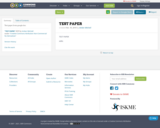
Test paper from google doc
- Subject:
- Education
- Educational Technology
- Material Type:
- Activity/Lab
- Date Added:
- 02/19/2019

Test paper from google doc
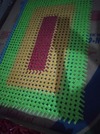
Technology and Livelihood EducationHandicraft ExploratoryRecycle
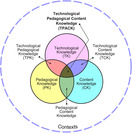
a weak knowledge about the TPACK model can be evidenced in English teachers due to the little use of the digital tools they have. However, it can be assumed that the integration of technologies into the educational process in a model-based way is in progress. In this way, the TPACK model is undoubtedly a theme to promote in the Institution, due to its transformative and integrative nature of knowledge. It can be implemented to the methodologies and teaching strategies according to the Curricular guidelines established in the English curriculum of the Ministry of Education. Consequently, the TPACK model as a practice in the classroom takes on important nuances that need to be investigated in order to establish the relationship between the TPACK model and teaching in the context of English as a subject.

a weak knowledge about the TPACK model can be evidenced in English teachers due to the little use of the digital tools they have. However, it can be assumed that the integration of technologies into the educational process in a model-based way is in progress. In this way, the TPACK model is undoubtedly a theme to promote in the Institution, due to its transformative and integrative nature of knowledge. It can be implemented to the methodologies and teaching strategies according to the Curricular guidelines established in the English curriculum of the Ministry of Education. Consequently, the TPACK model as a practice in the classroom takes on important nuances that need to be investigated in order to establish the relationship between the TPACK model and teaching in the context of English as a subject.

The "Transforming Assessment" model utilizes technology and flexible teaching strategies to foster collaboration, a crucial 21st-century skill. By incorporating theories such as Social Constructivism and implementing self-paced learning, technology tools/apps/sites, and Open Educational Resources (OERs), the model promotes personalized learning experiences and equips students with the skills needed for effective collaboration.

This book recognizes the difficulties TVET institutions confront and tackles important concerns like financial shortages, misalignment with labor market needs, inadequate quality assurance, under-developed staff, and lack of diversity and inclusion. Our hope is that a more in-depth understanding of the intricacies involved will result from this examination and that we may then provide workable answers to these problems.The transformative power of good leadership and governance, strategic planning and policy formulation, human resource management, and financial resource management are also highlighted throughout the book. It examines how these factors affect the overall performance of TVET colleges and offers advice on how to improve these facets for better results.

This assignment provides information formatting three types of tables. In section two is a resource on the appropriate placement of tables in documents.

List of tags/keywords mandatory to place your resource in collections showed on the front page on the Nordic University Health Hub
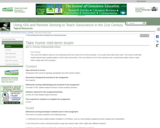
Students are given a week to finish this take-home exam. The exam tests GIS concepts, solving GIS question using real research data,and building a model to map the cuddybear habitat. This activity gives students practice in GIS functions learned from previous lab and also requires students to think independently to solve real GIS questions.
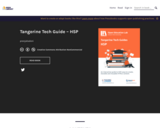
Word Count: 2438
(Note: This resource's metadata has been created automatically by reformatting and/or combining the information that the author initially provided as part of a bulk import process.)
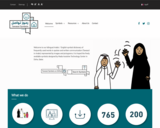
Tawasol symbols represent a symbol dictionary of frequently used words in spoken and written Arabic communication. The symbols are represented by images and pictograms.

This guide is designed to provide important resources and recommendations to support teacher implementation of digital learning.
This “Teacher Digital Learning Guide” is part of a series of guides including the “Parent and Family Digital Learning Guide” and “School Leader Digital Learning Guide” intended to support teachers, parents, families, and leaders in leveraging the capabilities of digital tools and resources for teaching and learning.

This lesson is to help teachers set up an account on Twitter and connect with other educators to grow personally and professionally.
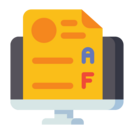
This resource is a Google Sheet Template that aids students and teachers in tracking individual student grades based on the number of points they've earned in the course compared to the total number of points available.
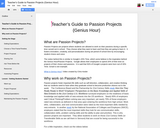
This is a guide to help teachers implement Genius Hour or Passion Projects in their classes. Passion Projects are projects where students are allowed to work on their passions during a specific time carved out in school. They choose what they want to learn and how they are going to learn it. It fosters innovation, creativity, and personalization during set period of school time by encouraging student choice and voice.
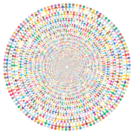
This module was created in response to an observed need by BranchED and the module authors for efforts to increase the recognition, adaptation, and use of open educational resources (OER) among pre- and in-service teachers and the faculty who work in educator preparation programs. The module's purpose is to position teacher educators, teacher candidates and in-service teachers as empowered content creators. By explicitly teaching educators about content that has been licensed for re-use and informing them about their range of options for making their own works available to others, they will gain agency and can make inclusive and equity-minded decisions about curriculum content. The module provides instructional materials, resources, and activities about copyright, fair use, public domain, OER, and visual literacy to provide users with a framework for selecting, modifying, and developing curriculum materials.

This participatory seminar focuses on the knowledge and skills necessary for teaching science and engineering in higher education. It is designed for graduate students interested in an academic career, and anyone else interested in teaching. Students research and present a relevant topic of particular interest. The subject is appropriate for both novices and those with teaching experience.
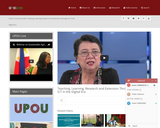
Grace Javier Alfonso, Ph.D, Professor Emeritus University of the Philippines Open University (UPOU) lectures on 'Teaching, Learning, Research and Extension Through ICT in the Digital Era'. She advocates Open, Distance e-Learning (ODeL), Learner-centered education, continuing professional development, lifelong learning and the sharing of open resources. Her lecture investigates OER and MOOCs and their significance for the Philippines.
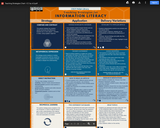
This is a chart of instructional teaching strategies for use by librarians teaching information literacy. It is aligned with the ACRL Framework for Information Literacy for use in higher education classrooms. The examples include flipped, online, and in-person lesson ideas.

This module provides faculty in higher education with an introduction to the use and creation of Open Educational Resources. It is intended for faculty who are new to the principles of Open Education. Several of the examples in this module relate to higher education in Canada, but you are encouraged to adapt the resources you suit your context.It can be used as part of a course on open education and would benefit from an expanded discussion of Open Pedagogy, an additional module on Open Access, and a module on Developing Open Policies for higher education institutions.